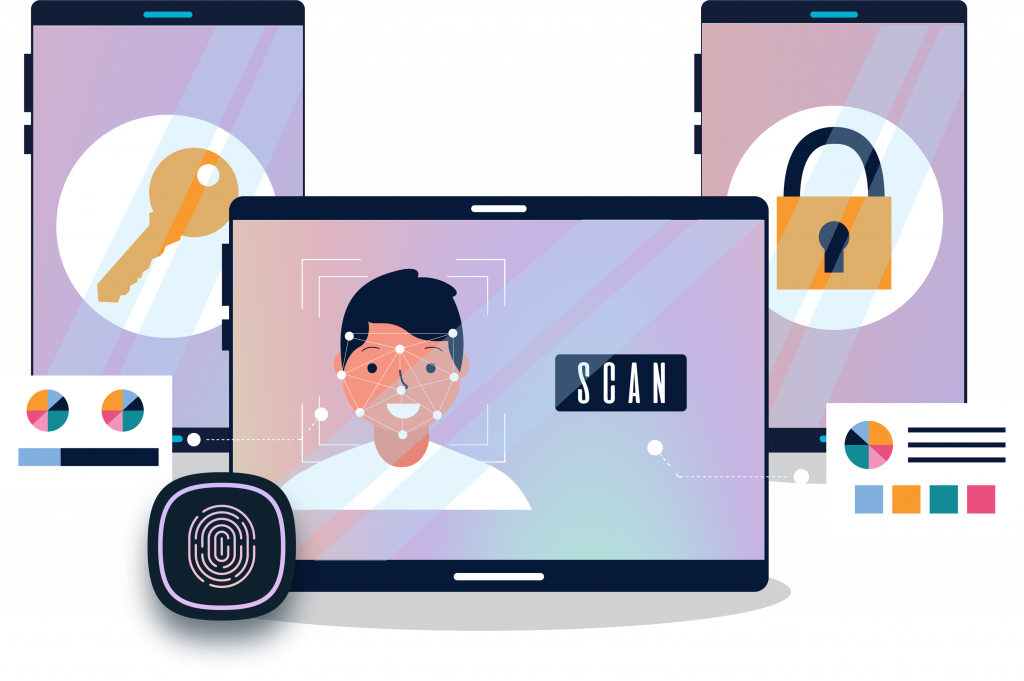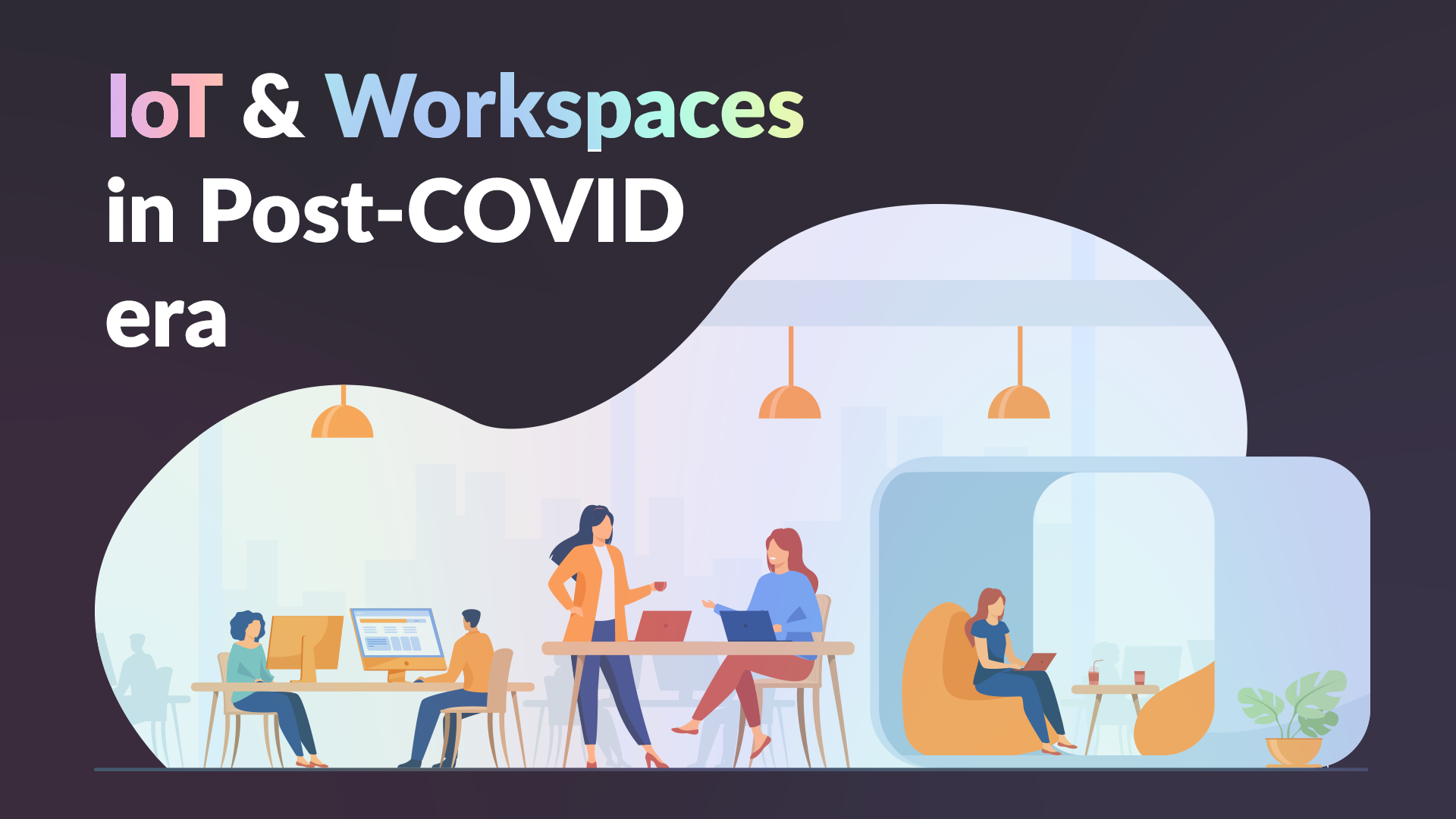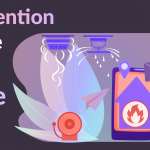Before COVID-19, workplaces were designed with some very specific goals in mind. The concept of remotely working & work-from-home had existed before, but these weren’t ideas that shaped how physical workspaces were planned and designed. It was all about densification and about fitting as many people in a building as humanly possible, all while carefully walking the tightrope of balancing both employee comfort and operating costs.
After the pandemic, almost all of that design philosophy had to be instantly thrown out the window and companies had to do a complete 180 on almost everything, scrambling to adopt work-from-home and remote policies. As more and more organizations have shifted completely towards this virtual workspace model, the need to rethink and restructure physical workplaces from the ground up has finally been realized.

To bridge the gap from the outdated physical workplaces towards its future, the virtual workspaces, there definitely needs to be a technological catalyst around which we can build modern workspaces. We really believe IoT can be the knight in shining armor. No really, It’s not too difficult to imagine how the IoT can digitally transform our workplaces. The Internet of Things at work enables smart buildings that automate business processes, granting easy data distribution, straightforward data analysis, and better IoT asset control and management, enabling a lot of business acumens that were previously unheard of.
It’s time to reevaluate what your employees need, and instead of making big changes and restructures, it’s more important to use data to make better decisions about how to use your commercial real estate. Using the data we’ve gathered, we’ve discussed some of these ideas and transformations IoT can bring to your business.
Space Utilizations
Commercial real estate in the United States accounts for over 12 Billion sq feet of covered area. This space doesn’t come cheap; according to MarketWatch.com, providing a workspace for a single employee can cost your organization an astounding $4000 – $14000 a year! This includes Rent, Tax, Power, Cooling, Lighting, etc.
At the same time, these spaces are very underutilized, the average organization uses only 50% of their space on any given day. That’s a lot of wasted revenue, especially if you consider that Real Estate represents the 2nd largest expense for any company, second only to personnel. This statistic goes back a few years, now with the COVID-19 pandemic, imagine how much revenue is wasted by organizations in maintaining these unused workplaces.
We believe that an opportunity to optimize the problem of space utilization exists, and one really simple and effective way to deal with this problem is using IoT, which can save millions of dollars and result in better Employee engagement both at the same time!
- Challenges:
- Space Planners typically know that space has been assigned, but struggle to know if it is actually used.
- Space Planners frequently only get anecdotal feedback on space over/under utilization.
- Space Planners get resistance when trying to reduce space and struggle to accurately represent the actual space utilization in a quantifiable manner.
Using IoT-based solutions, organizations can accurately measure building occupancy levels to keep track of Room and Seat Vacancies, these metrics can be adjusted to be recorded multiple times a day to generate insightful data, that can be used for accurate decision-making.
Variables such as Occupancy and Vacancy levels, deliver crucial insights of wasteful or insufficient space, and measuring them allows organizations to drive data-backed decisions. Using these variables as guides, one can learn where there’s room to make improvements, such as reducing your real estate portfolio, repurposing space, or growing.
Power Optimization
Historically Human Beings have spent 90% of their time indoors. This has resulted in the need for commercial buildings to power these spaces optimally. This energy comes at a significant cost to businesses, with the largest component of the operations cost being utilities, and commercial buildings consuming nearly 40% of the total U.S. Energy.
In 2018, The US accounted for 17% of the total world energy consumption but with less than 4% of the entire population. There’s an obvious disconnect between the energy requirements of the rest of the world versus that of the United States. We believe IoT-based energy management and optimization can deliver data-driven insights to allow building managers to use these insights for quick & measurable differences for many businesses.

It’s common knowledge at this point for organizations that most of their energy and operations expenditure is quite an inefficient avenue; one that can undergo significant optimization, both in terms of running more smartly and more cost-effectively. In smart buildings, IoT-enabled energy utilization dashboards can aid in sensor control, identifying specific times to heat or cool rooms, finding air quality threats, and deploying predictive fixes and maintenance. A study by Texas Instruments indicates that in HVAC and lighting IoT solutions, energy use can be cut by 40% just by sensor control. The same study also indicates that thermal comfort improves human productivity by 3%, impacting the bottom line.
Smart HVAC systems can also monitor the air quality in your workspace, keeping it at an optimum level. Used in conjunction with smart meters, these technologies allow you to both maintain a constant temperature (and a more pleasant working environment) and also reduce your power consumption rates.
Access Control
Modern work ethic has made us realize that work can be done from anywhere. A Device and an Internet connection are all we need. Hence this freedom should be applicable to modern workplaces as well. Using IoT, this philosophy can be easily be used to create the workplaces of the future.

For Example, Building Managers can use IoT to monitor and control their workspaces around the clock, Not only does it mean you can open your space 24/7, but you can also give members access to specific areas, and prevent them from entering potentially hazardous ones. For example, a member could book a meeting room on the fly for a specific time and only get access for their allotted hours. Power can be disabled when they’re not in use. Workspaces could be more efficiently utilized to maximize your ROI, and allow you to create a better, more seamless experience for your users.
You could also combine your smart access system with a smart cashless payment system. As a result, members could be automatically charged for meeting room usage, seating usage, food, and drinks, using office supplies, or attending events at your space.
Employees have the freedom to enter any one of your buildings in any corner of the world and enjoy the same familiar experience at any of your branches.
Conclusion
Smart IoT-driven offices mean more time for business and less for office-keeping chores and bureaucratic procedures like ordering maintenance. Your employees get distracted less and save time on organizing their workspace. Your Organization gets a more optimized use of their assets, to deliver a better Return on Investment, and also prevent wasteful spending on resources at the same time.





